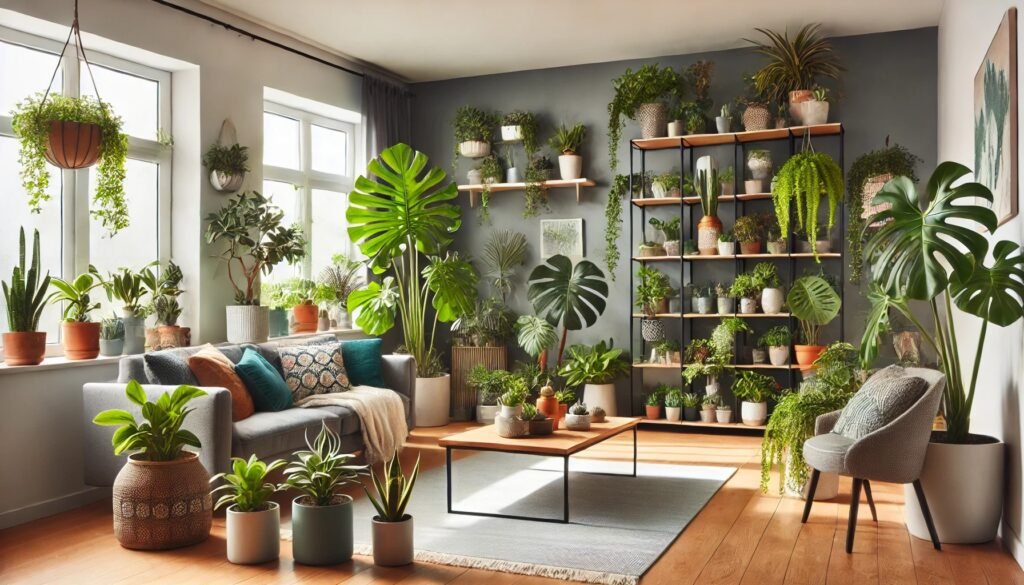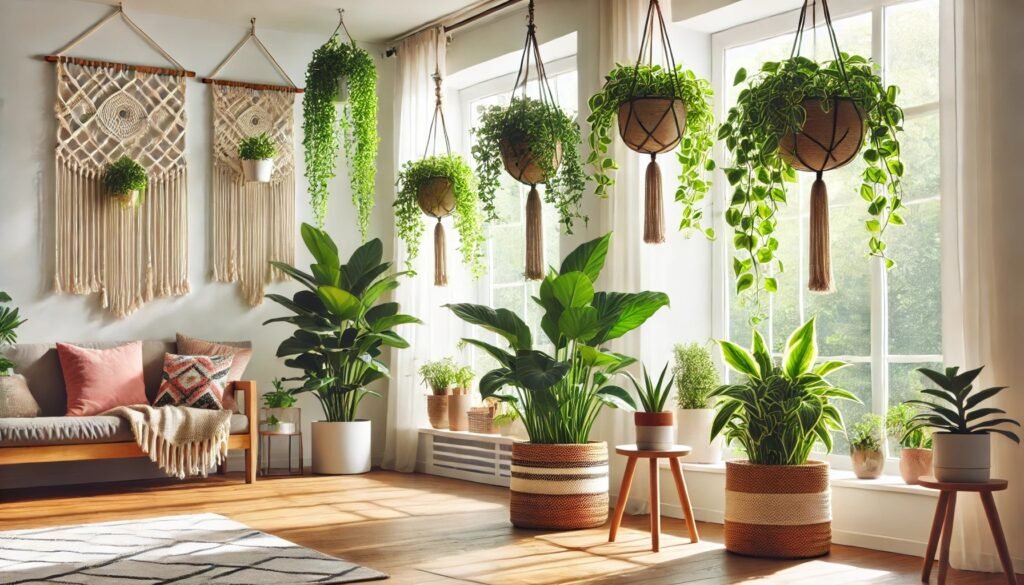
Growing a lemon tree indoors is a rewarding experience. It adds a touch of the Mediterranean to your home, fills your space with a delightful fragrance, and, of course, provides you with fresh lemons. Whether you’re a seasoned gardener or just starting, this guide will walk you through everything you need to know to successfully grow a lemon tree indoors.
Choosing the Right Lemon Tree for Your Home
Before you start, it’s important to choose the right lemon tree variety. Not all lemon trees are well-suited for indoor environments. However, a few specific types thrive indoors and can easily adapt to the constraints of a pot and the light conditions of a home.
The Meyer Lemon is a favorite among indoor gardeners. This variety is a cross between a lemon and a mandarin orange, which results in a sweeter and less acidic fruit. It’s also more compact than other lemon trees, making it an ideal candidate for indoor growth.
Another option is the Ponderosa Lemon. This variety produces large, traditional lemons and can be grown indoors with proper care. It’s a bit larger than the Meyer, so ensure you have enough space to accommodate it.
For those with limited space, dwarf varieties are a great choice. These trees are bred specifically to stay small, yet they still produce full-sized lemons. Regardless of the variety you choose, each one has its own unique characteristics, but all share the same basic care needs.
Preparing the Perfect Spot
Once you’ve selected your lemon tree, the next step is finding the right spot in your home. Lemon trees are sun lovers. They require a lot of light, at least eight to twelve hours of direct sunlight each day. Placing your tree near a south-facing window is ideal. If natural sunlight is a bit lacking, consider supplementing with grow lights to ensure your tree gets the light it needs.
Temperature is another crucial factor. Lemon trees prefer a warm environment, thriving in temperatures between 65 to 75 degrees Fahrenheit (18 to 24 degrees Celsius). Keep them away from drafts, air conditioners, or heating vents that could cause sudden temperature fluctuations. Such changes can stress the tree, leading to leaf drop or poor fruit production.
Potting and Soil Essentials
Choosing the right pot and soil for your lemon tree is essential for its health and growth. Start with a pot that’s large enough to allow your tree to grow, typically 12 to 24 inches (30 to 60 cm) in diameter. Ensure that the pot has adequate drainage holes at the bottom. Good drainage is crucial, as lemon trees don’t like to sit in water, which can lead to root rot.
When it comes to soil, a well-draining mix is key. A high-quality potting mix specifically designed for citrus or one you prepare yourself with added perlite or sand will work well. This kind of soil mix provides the necessary nutrients while also ensuring that water doesn’t pool around the roots. Keep the pH of the soil slightly acidic, around 5.5 to 6.5, which is perfect for citrus trees.
Planting and Transplanting Tips
If you’re starting with a seed, patience is required. Growing a lemon tree from seed can take years before it bears fruit. However, it’s a rewarding process if you have the time. On the other hand, buying a young tree from a nursery can give you a head start, especially if you’re eager to enjoy lemons sooner.
When transplanting your tree, be gentle with the root ball. Choose a pot that is slightly larger than the one it came in. Fill the new pot with your prepared soil mix, place the tree in the center, and fill in around the roots with more soil. Be careful not to bury the tree too deep; the top of the root ball should be level with the soil surface. Water the tree well after transplanting to help settle the soil and eliminate air pockets.
Watering and Feeding for Healthy Growth
Lemon trees need consistent watering to thrive, but the key is balance. The soil should be kept moist but never soggy. Watering deeply until the water drains out of the bottom of the pot is ideal. This encourages the roots to grow downwards, leading to a stronger, more stable plant. However, always allow the top inch or so of soil to dry out between waterings to avoid overwatering, which can lead to root rot.
Feeding your lemon tree is also crucial, especially during the growing season. A balanced citrus fertilizer, applied every four to six weeks, will keep your tree nourished. Watch for signs of nutrient deficiencies, such as yellowing leaves, which could indicate a need for more specific nutrients like magnesium or nitrogen. Regular feeding will help ensure your lemon tree stays healthy and productive.
Pruning and Maintenance for Longevity
Pruning is an essential part of caring for your indoor lemon tree. Regular pruning helps to keep the tree’s size manageable and encourages healthy growth. Focus on removing any dead or diseased branches, as well as any that cross over each other, which can cause damage. Prune your tree in early spring before new growth starts, shaping it to fit your space.
Another important aspect of indoor lemon tree care is pollination. Unlike outdoor trees, which rely on insects for pollination, indoor trees may need a bit of help. You can hand-pollinate your tree by using a small, soft brush to transfer pollen from flower to flower. This simple step can significantly increase your tree’s fruit production.
Pests can also be an issue with indoor lemon trees. Common pests include spider mites, aphids, and scale. Keep an eye on your tree and inspect the leaves regularly. If you notice any pests, treat them with natural solutions like neem oil or insecticidal soap to keep your tree healthy without the use of harsh chemicals.
Harvesting Your Lemons
Harvesting lemons is one of the most rewarding parts of growing a lemon tree indoors. Knowing when to pick the fruit is key to getting the best flavor. Lemons are ready to harvest when they have fully turned their characteristic yellow color and feel slightly soft to the touch. They should also come off the tree easily with a gentle twist.
After harvesting, lemons can be stored at room temperature for about a week or in the refrigerator for longer storage. The cool environment slows down the ripening process, allowing you to enjoy fresh lemons for several weeks.
Troubleshooting Common Issues
Even with the best care, you might encounter some challenges when growing lemon trees indoors. One common issue is yellowing leaves. This can be caused by overwatering, nutrient deficiencies, or inadequate light. Adjusting your watering schedule, feeding your tree with the appropriate fertilizer, or moving it to a brighter spot can often resolve this problem.
If your lemon tree isn’t producing fruit, it could be due to insufficient light, improper pollination, or stress from environmental factors. Ensuring that your tree gets enough light and is hand-pollinated can help improve fruit production. Also, try to maintain a stable environment, free from drafts and sudden temperature changes, to reduce stress on the tree.
Leaf or fruit drop can also be a sign of stress. This often happens when the tree is moved, exposed to temperature extremes, or watered inconsistently. Keeping a consistent care routine and avoiding sudden changes in the tree’s environment can help prevent this issue.
Final Thoughts
Growing a lemon tree indoors is a fulfilling and enjoyable project that brings both beauty and functionality into your home. With the right variety, proper care, and a little patience, you can enjoy fresh, home-grown lemons year-round. Whether you’re savoring the vibrant aroma of the blossoms or the tangy taste of the fruit, an indoor lemon tree is sure to brighten up your space and your life. Start your lemon-growing journey today, and experience the satisfaction of nurturing your own slice of citrus paradise.
Stay connected with the world of plants! Subscribe to Phylofy for expert gardening tips, DIY projects, and eco-friendly inspiration. Join our community and nurture your love for nature. Don’t miss exclusive content and updates. Subscribe now!



